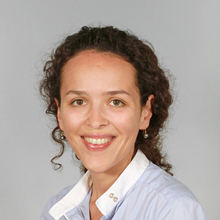Zayna Chaker, chercheure à l'IGFL
CMO

L'équipe CMO vous invite à assister à la conférence de Zayna Chaker, chercheure à l'IGFL
Au cours de sa thèse (2011-2014) réalisée à l’INSERM, Centre de Recherche Saint Antoine à Paris et encadrée par le Dr. Martin Holzenberger, Zayna Chaker a montré que l'inhibition de la signalisation du facteur de croissance IGF dans les progéniteurs neuronaux adultes retarde le déclin de la neurogenèse lié à l'âge. Lors de son post-doctorat à l’Université de Bâle en Suisse (2015-2024), avec la professeure Fiona Doetsch, elle a démontré l’importance des cellules souches neurales pour la plasticité olfactive pendant la gestation, et son importance sur l’attachement précoce de la souris allaitante à sa propre progéniture. Recrutée comme responsable d’équipe à l'Institut de Génomique Fonctionnelle de Lyon (IGFL) en Juillet 2024, puis récemment admise au CNRS en tant que CRCN (Octobre 2025), elle développe un projet de recherche original et interdisciplinaire pour décoder la logique moléculaire. Ce projet a été d’abord soutenu par la FRM, le programme ATIP-Avenir et une ERC-Strating grant (2025).
Title of the seminar: Coordinated action of neural stem cells in the adult brain: A functional and evolutionary perspective
Summary:
Research over the last three decades has demonstrated that new neurons can be generated in the adult brain, and integrate into pre-existing complex circuits. The process of adult neurogenesis is evolutionary conserved among vertebrates, including fishes, frogs, reptiles, birds, rodents and primates. It is sustained by a small population of undifferentiated cells, called neural stem cells (NSCs), which persist as embryonic vestiges in adult brains. These cells reside in tightly controlled micro-environments called niches. The addition of young cells constitutes an important layer of adult brain plasticity, further enhancing its ability to adapt to diverse life experiences. However, the physiological relevance of adult-born neurons as well as the regenerative power of NSCs after injury are still highly debated to date, especially in mammals.
Besides constitutive neurogenesis, we recently showed that regionally-defined subpopulations of NSCs in the adult ventricular niche produce transient waves of functionally-relevant interneurons in response to pregnancy and motherhood. This process finely tunes the mother’s olfactory sensitivity to own versus alien pup odor. In my lab, we are now investigating the cellular and molecular mechanisms allowing regionally-distinct pools of NSCs to coordinate their behavior in space (across all niches) and time (from embryo to different phases in adulthood), under specific physiological and pathological conditions.
CRNL | CH Le Vinatier | Bâtiment 462 Neurocampus Michel Jouvet | Amphithéâtre | 95 Boulevard Pinel | 69500 Bron











